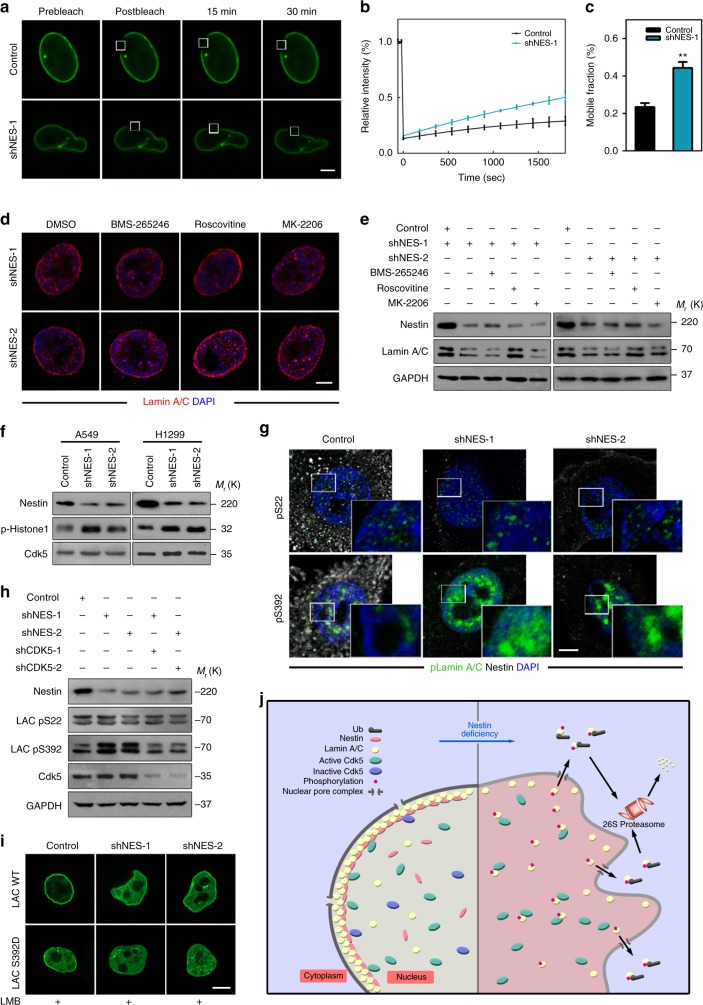Fig. 6.
Phosphorylation by Cdk5 drives the degradation of lamin A/C after Nestin knockdown. a, b FRAP anaysis of GFP-lamin A/C in control and Nestin-knockdown A549 cells. a Representative fluorescence images showed (from left to right): pre-bleach image; image taken immediately after bleaching; and two frames (15 and 30 min) from a time-lapse image series taken at 20-s intervals over half an hour. Scale bars, 5 μm. b The mean normalized FRAP data measured from the bleached regions (n = 5). c The average mobile fractions of the lamin A/C proteins were calculated from the FRAP data shown in b (n = 5). d, e Immunostaining and immunoblotting analysis of lamin A/C status. A549 cells of control or Nestin-knockdown were treated with BMS-265246 (1 μM), roscovitine (20 μM), or MK-2206 (3 μM). After 24 h, cells were stained with anti-lamin A/C antibody (red) and DAPI (blue) (Scale bars, 5 μm) (d) or immunoblotted with the indicated antibodies (e). f The effects of Nestin knockdown on Cdk5. Cdk5 was immunoprecipitated in control or Nestin-knockdown A549 and H1299 cells, and kinase assays were conducted using a Cdk5 substrate peptide, as described in the Methods section. g Representative immunofluorescence data for pS22 lamin A/C or pS392 lamin A/C (green) plus Nestin (white) in control and Nestin-knockdown A549 cells. Scale bars, 5 μm. h Immunoblotting analysis of lamin A/C phosphorylation levels affected by Nestin and Cdk5 knockdown. A549 cells were transfected with the indicated shRNAs, and proteins were extracted and subjected to immunoblotting. i Confocal microscopy was employed to determine the subcellular localization of WT GFP-lamin A/C, compared with GFP-lamin A/C-S392D. A549 cells transfected with the indicated constructs were treated with 25 ng/ml leptomycin B (LMB) for 6 h, and then harvested, fixed, and stained with DAPI (blue). Scale bars, 10 μm. j Illustration of the Nestin–Cdk5–lamin A/C axis in the regulation of tumor senescence. The quantified results were presented as mean ± SEM of five independent experiments (b, c), as assessed using unpaired t-test (c). **P < 0.01

